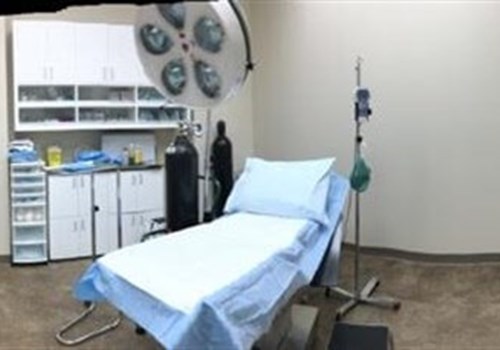
The Most Common Types of Foot and Ankle Surgery
There are many different types of foot surgery. For example there’s over 100 different surgical procedures performed. Here are some of the top level general procedures needed.
Bunion Surgery
Bunions are close to my heart, and my feet. The hardest working joint in the lower limb, the big toe joint can easily form a bunion. This is where the big toe starts to deviate towards the 2nd toe and a lump forms around the big toe joint.
As bunions are far more complex than just a lump on your foot, the various surgical procedures on them are varied. A key consideration before undergoing bunion surgery. As the big toe joint is the hardest working joint in the body, what happens after the surgery is complete? Will you be able to move the joint? Will you be able to load the joint? What activities are you expecting to do after bunion surgery?
Where us podiatrists tend to see and hear a lot of people who are disgruntled with their bunion surgery results is where these questions are not asked prior.
Because the joint is such a hard working area of our body, and there are small bones around the toe joint replacement is not really a viable option. Procedures that can give a good cosmetic result are quite straight forward (as far as a foot surgery goes). Procedures that allow for complex function and loading post surgery are much trickier, and your surgeon will need to be clear on their expectations for your foot as well.
Plantar Fasciitis Surgery
Plantar fasciitis is the most common musculoskeletal injury in the foot. It’s something that is readily and easily treated with active measures. Strengthening, footwear, orthotics and a few other modalities are all proven effective in resolving most cases of plantar fasciitis.
But there’s always outliers.
Some people who have plantar fasciitis do not respond to active measures and surgery can be required. The number of people who need this is very low, personally I have only known of one case in the last 10+ years who required surgery.
Surgical procedures for this severe, recalcitrant and chronic plantar fasciitis tend to involve lengthening the plantar fascia. For people with plantar fibromas which can present very similar to plantar fasciitis the surgical resolution is much simpler where the thick lesions are snipped away.
Hammertoe Surgery
Another very common surgical procedure which is performed for both comfort and to save limbs. Hammertoes are toes that sit up more and can rub on the top or soles of shoes. For some this means wearing some shoes is very painful. For others it can lead to painful corns and callus. And for those with diabetes or poor circulation they can lead to ulceration and amputation.
The surgery options for hammertoes can be as simple as tendon release procedures where local anaesthetic is used to snip a toe tendon which allow the toes to sit flat again. This does lead to weaker toes and potential balance issues however.
More complex surgical procedures that involve bone work or joint arthroplasty are needed if the hammertoe is more fixed and rigid.
Morton’s Neuroma Surgery
A Morton’s Neuroma is where the sheath around the nerve that sits between the long metatarsal bones in the foot gets too thick. This happens with chronic pressure on the nerve. Usually as a result of some instability where the metatarsals roll past and up against each other, or from tight shoes.
The surgery performed for a Morton’s Neuroma is usually a neurectomy where the thick nerve is simply cut out. As there’s unlikely to be any bone or joint involvement the recovery whilst still involved, is faster than other more complex foot surgeries. With the nerve removed there can be numbness and loss of feeling in the toes after surgery.
Ankle Fusion Surgical Procedure
There’s no coming back from an ankle fusion. When you think how much movement and load goes through the ankle joint in all three planes (your ankle goes up, down, in, out and twists too!) a fusion to limit this movement is drastic.
But drastic injuries call for drastic measures like ankle surgery.
Chronic and complex arthritis of the can call for an ankle fusion. As can traumatic injuries such as those that can occur if falling from a height or in motor vehicle accidents. While not yet as commonplace as knee replacement surgery, ankle joint replacements are on the rise in recent years.
Flat Foot Surgery
An adult acquired flat foot, also called tibialis posterior tendon dysfunction (stage 4) is not to be confused with “having a flat foot”.
Most of us have a flatter foot shape, particularly if we are self diagnosing! Flat feet are usually very healthy and good at shock absorption and adapting to varying terrain.
Where surgery is often required is for the severe adult acquired flat foot deformity. This is where the foot loses arch height with the failure of muscles, tendons and ligaments.
It’s a big surgery, for a big injury.
Ingrown Toenail Surgery
Ah, my favourite. An ingrown toenail surgery is one of the most rewarding and enjoyable procedures a podiatrist can complete.
For anyone that’s ever had an ingrown toenail, they are very, very painful. Often recurrent over many years as well.
The procedure most commonly performed for ingrown toenails is called a partial nail avulsion. Podiatrists, general practitioners, general surgeons and podiatric surgeons all perform a version of this procedure.
Foot Surgery for Arthritis
Arthritis in the feet is as common as arthritis can get. Most of us will have arthritis changes showing up (not necessarily with any pain) through early adulthood.
If we suffer from aggressive forms of arthritis with significant pain and reduction in function there can be a number of foot surgery options to discuss. Using internal fixation to stabilize arthritic joints is common. As is “bone work” where your foot surgeon cuts away extra bone lumps that can form known as osteophytes.
Who Performs Foot Surgery In Alberta
There are two surgical fields who perform complex bone and joint foot surgery in Alberta. For less complex foot surgeries that only involve nails and skin podiatrists are also included.
Podiatric Surgeons
The podiatry surgery pathway is one of the most rigorous surgical training pathways in Canada. To become a podiatric surgeon you must first be a podiatrist where you complete 4 to 5 years of undergraduate training. Poditric surgeons require an intense training program over many years.
Orthopaedic Surgeons
Orthopaedic surgeons come from the medical side before moving into orthopaedics. There are many more orthopaedic surgeons than podiatric surgeons in Albert and the training is much more entrenched in the public and private health sector.
Podiatrists
Podiatrists are not here for your reconstructive surgery needs. But we can provide surgical treatment for nail and skin pathologies. Ingrown toenails, warts and other superficial lesions like epidydimal cysts are all within the scope of your podiatrist.
For those podiatrist who specialise in the High Risk Foot, sharp surgical debridement is a procedure than is required for ulcer management.
While not all podiatrists are podiatric surgeons, every podiatric surgeon is a podiatrist by training. This means that there are many a great podiatric surgeon performing ingrown toenail and skin procedures.
How To Choose A Foot Surgeon
Before you choose who is going to take a scalpel to your feet, ask yourself some important questions. Once you’ve thought about these make sure you take a list of your questions to your surgical consultations to ensure you and your surgeons expectations are consistent.
- Do I know what is wrong or why am I seeking this foot surgery?
- Have I undertaken active treatment measures with minimal risks before looking for surgery?
- What activities am I expecting to do after my foot surgery?
- 1 month after
- 3 months after
- 6 months after
- 12 months after
- How long am I going to be immobilized after my foot surgery?
- Who will help me with my daily chores? How will I commute?
- Where will I be completing my post surgical rehabilitation?
- What shoes will I be wearing after surgery? Which orthotics?
Where possible we recommend clients get a couple of opinions from quality trusted surgeons. Considering the pros and cons of orthopaedic or podiatric surgery pathways. The pre surgery interview is where you’ll need to get trustworthy answers to these questions.
Now the questions aren’t to scare you. Foot surgery is not usually something to take lightly. Think of every time you take a step, hopefully there’s 10,000 of them every day. Imagine now you’ve had a surgical procedure which is going to completely change that. Every step for months will be in a different shoe or moon boot. You’ll be completing physical therapy as you get back function and range of motion. Even for weeks after surgery you could be limited to not bathing your feet and getting around with a cast on.
Respect your feet and the demands you place on them by respecting that your foot surgery isn’t complete when you wake up from the anaesthetic. For most of us, this is where the journey back to function begins.
Looking For A Fully Certified Facility?
Step Ahead offers leading edge treatment approaches and clinical facilities to treat and perform surgery as well as all other foot ailments.
Contact us for a consultation today!

